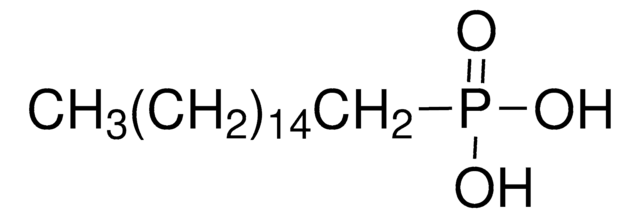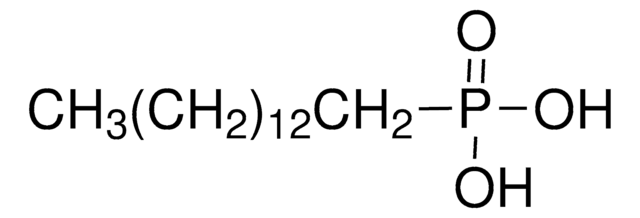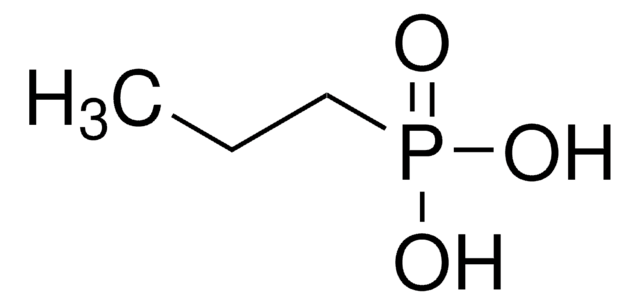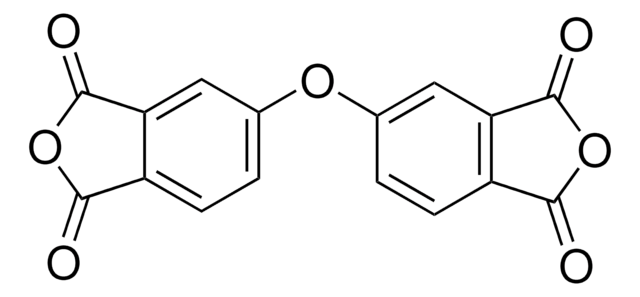715166
Octadecylphosphonic acid
97%
Sinónimos:
n-Octadecylphosphonic acid, ODPA
About This Item
Productos recomendados
Ensayo
97%
Formulario
crystals
mp
95-100 °C
cadena SMILES
CCCCCCCCCCCCCCCCCCP(O)(O)=O
InChI
1S/C18H39O3P/c1-2-3-4-5-6-7-8-9-10-11-12-13-14-15-16-17-18-22(19,20)21/h2-18H2,1H3,(H2,19,20,21)
Clave InChI
FTMKAMVLFVRZQX-UHFFFAOYSA-N
¿Está buscando productos similares? Visita Guía de comparación de productos
Descripción general
Aplicación
Palabra de señalización
Warning
Frases de peligro
Consejos de prudencia
Clasificaciones de peligro
Eye Irrit. 2 - Skin Irrit. 2
Código de clase de almacenamiento
11 - Combustible Solids
Clase de riesgo para el agua (WGK)
WGK 3
Elija entre una de las versiones más recientes:
¿Ya tiene este producto?
Encuentre la documentación para los productos que ha comprado recientemente en la Biblioteca de documentos.
Los clientes también vieron
Artículos
There is widespread demand for thin, lightweight, and flexible electronic devices such as displays, sensors, actuators, and radio-frequency identification tags (RFIDs). Flexibility is necessary for scalability, portability, and mechanical robustness.
Self-assembled monolayers (SAMs) have attracted enormous interest for a wide variety of applications in micro- and nano-technology. In this article, we compare the benefits of three different classes of SAM systems (alkylthiolates on gold.
Nuestro equipo de científicos tiene experiencia en todas las áreas de investigación: Ciencias de la vida, Ciencia de los materiales, Síntesis química, Cromatografía, Analítica y muchas otras.
Póngase en contacto con el Servicio técnico














